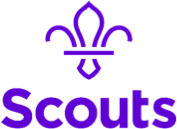Control of access to "protected" areas: Unexpected access Unsupervised young people | Strongly protected areas appropriate to activity inside: - Rope on floor - Rope/tape on pigtails - Harris fencing
Gates/Entrances must be obvious - Signage - Difference in boundary
Gates/entrances must be located so queues are not directed towards other protected areas. - Use barriers to enforce queue direction if necessary
Higher risk activities may need a queue manager at the gate to ensure young people don't pass through.
(Risk in this circumstance is gauged by risk of injury through extra people entering the "protected" zone; e.g. sharps, fire, etc.) | 